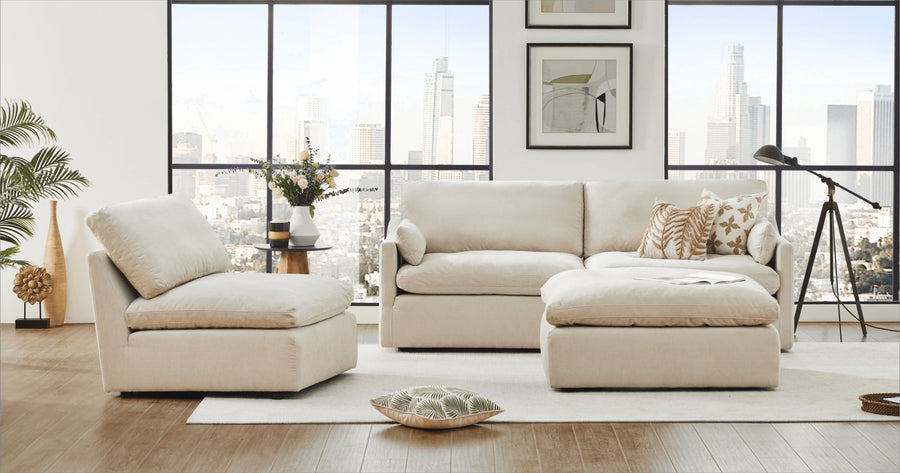The Evolution of Modular Sofas: From Concept to Customization
Cuerpo
Modular sofas have revolutionized the way we think about living room furniture. These versatile pieces are designed to adapt to various spaces and needs, offering a blend of functionality and style. In this article, we will explore the evolution of modular sofas, from their initial concept to the highly customizable options available today.

The Birth of the Modular Sofa Concept
The concept of modular sofas emerged in the mid-20th century, during a time when modernist design principles were gaining popularity. The idea was to create furniture that could be easily rearranged to suit different spaces and purposes. Early modular sofas were simple in design, often consisting of a few basic components that could be combined in various ways.
These early designs were groundbreaking because they allowed homeowners to customize their seating arrangements without the need for multiple pieces of furniture. This flexibility was particularly appealing in urban environments where space was limited. The modular sofa quickly became a symbol of modern living, embodying the principles of functionality and adaptability.
Innovations in Design and Materials
As the popularity of modular sofas grew, designers began experimenting with new materials and configurations. The 1970s and 1980s saw the introduction of more sophisticated designs, incorporating elements such as adjustable backrests, integrated storage, and a wider range of upholstery options. These innovations made modular sofas even more versatile and appealing to a broader audience.
Advancements in materials also played a significant role in the evolution of modular sofas. The use of lightweight, durable materials allowed for more intricate designs and easier reconfiguration. Additionally, the development of high-quality foam and fabric technologies improved the comfort and longevity of these pieces, making them a more practical choice for everyday use.
The Rise of Customization
In recent years, the trend towards customization has taken the modular sofa to new heights. Today, consumers can choose from a vast array of components, fabrics, and finishes to create a sofa that perfectly suits their individual needs and tastes. This level of customization allows for a truly personalized piece of furniture that can adapt to changing lifestyles and preferences.
One of the key drivers behind this trend is the increasing demand for multifunctional living spaces. As homes become more compact and open-plan living becomes the norm, the need for adaptable furniture has never been greater. Modular sofas offer a solution to this challenge, providing flexible seating options that can be easily reconfigured to suit different activities and occasions.
Future Trends in Modular Sofa Design
The future of modular sofas looks promising, with several exciting trends on the horizon. One such trend is the integration of smart technology, allowing for features such as built-in charging ports, wireless speakers, and adjustable seating positions controlled via smartphone apps. These innovations will further enhance the functionality and convenience of modular sofas, making them an even more attractive option for modern homes.
Another emerging trend is the focus on sustainability. As consumers become more environmentally conscious, there is a growing demand for furniture made from eco-friendly materials and produced using sustainable practices. Modular sofas are well-suited to this trend, as their adaptable nature means they can be easily updated or reconfigured rather than replaced, reducing waste and promoting a more sustainable approach to interior design.
Conclusion
The evolution of modular sofas from concept to customization has been a fascinating journey, marked by continuous innovation and adaptation. These versatile pieces of furniture have transformed the way we think about living spaces, offering unparalleled flexibility and personalization. As we look to the future, it is clear that modular sofas will continue to play a central role in modern interior design, evolving to meet the changing needs and preferences of consumers around the world.






Comentarios